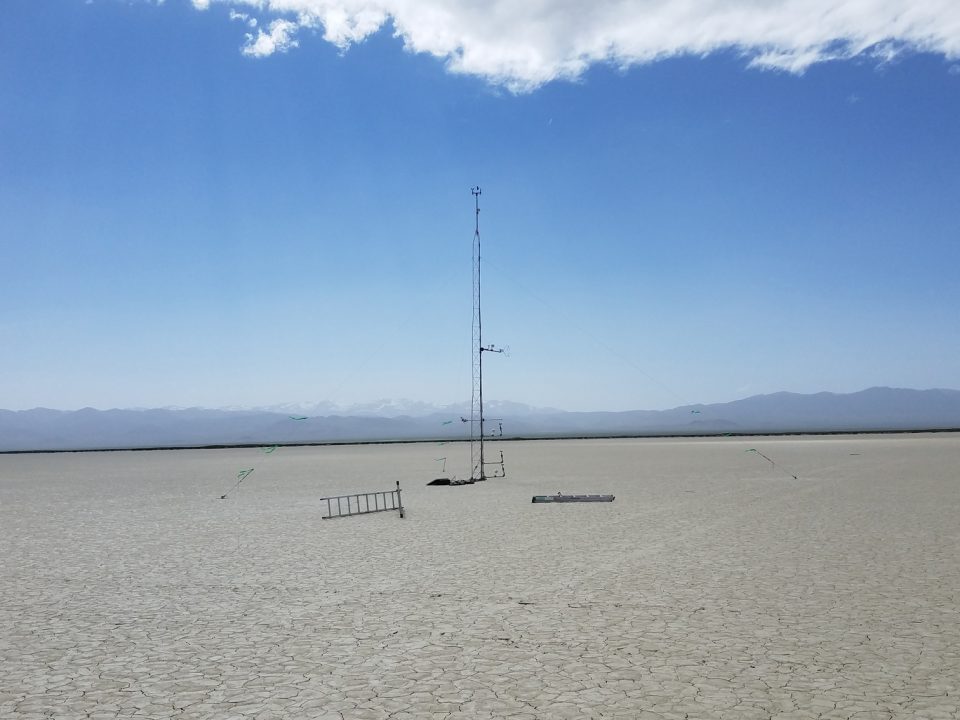Dust Devil Fieldwork #4: Team Paparazzi

Dust Devil Fieldwork #3: Progress
June 12, 2019
Dust Devil Fieldwork #5: Summary
July 11, 2019June 16, 2019
This is Part 4 of a series on my dust devil fieldwork in 2019 (see Part 1 | Part 2 | Part 3).
The last post was a short one. That’s partly because I’m short on time, partly because my poor aging laptop’s battery doesn’t work (so I can only make these posts when it’s plugged into an inverter while my truck is on, which means something else that needs charging isn’t getting charged), and partly because I’m tethering my phone for internet access and don’t want to totally eat up my data plan.
Anyway.
Last time I showed the weather station, so this time I’ll show pictures of the camera setup. We’ve got four cameras pointing across our field site toward our weather tower, a couple of kilometers away. They’re there to look for dust devils, so we can track their occurrence and location every day.
The camera setup was designed by Stephen Scheidt of the Planetary Science Institute, who joined us in the field for 2 weeks. Unfortunately he had to leave yesterday, so he spent some time showing us the daily setup and takedown of the cameras, so that we’ll get a consistent data set. Stephen has a blog of his own, and I’m sure when he gets a chance he’ll write about how he set these up for us.
So our goal was to find dust devils. You may ask: have we found them? That’s a hair-raising question for dust devil field research, since some areas prone to dust devil activity can go for weeks in hot sunny weather, mysteriously producing no dust devils. A colleague of mine from the UK spent 2 weeks somewhere in the US southwest earlier this spring (I forget exactly where now), and the whole trip was a bust: no dust devils at all. That’s a disaster for us (similar to optical astronomers continually encountering cloudy weather that obscures their target in the sky). When we chose our site, Steve Metzger and I weren’t sure it would produce dust devils. The playa surface here is hard, suggesting that there might not be an easily erodible supply of sediment to be lofted into dust devils. We knew the vortices would form, as they typically do in arid regions where dry convection dominates during the daytime. But would there be dust devils?
Yep, we got dust devils! Here’s one that swirled past our camp on one of our first days:
Some are big, and some are small. Some days they begin earlier in the morning and other days they don’t start till shortly after noon. Most days they’re sort of “medium”-sized and wispy. There’s no big sand skirt like you find in other places, because this playa has lots of dust but not much sand (maybe next year we’ll choose a sandier site to see how that changes the dust devils).
Here’s one that was a bit of a monster a couple of days ago. At some point I’ll upload a short video I took of it from my truck (I was torn between driving into it and staying outside to make a video…)
I’ll write more about the dust devils next time, talking a bit about the variation we see in size and frequency. We’ll have such huge data sets that we’ll spend a long time sifting through them to really understand these beasts.






